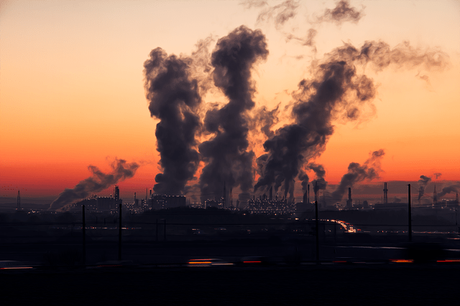Earlier this year, the Telegraph published an article reporting that figures had shown how, “air pollution in London passed levels in Beijing this week,” and that Sadiq Khan, the mayor of London had commented saying that “filthy air” was now a “health crisis.”
The article went on to examine the role of wood burning stoves in the high levels of pollution. While it is only proper to look at all the individual contributors to the problems of poor air quality, perhaps more of us should be shouting about the potential solutions that are being developed to help combat and reduce this ‘’health crisis’’.

We are all aware that green is clean, but other than the high profile technologies being developed that will lead to a cleaner environment, how many of us know what green really means?
Electric Cars
One of the biggest contributors to air pollution are the emissions pumped into the air by cars that run on petrol or diesel. Nobody really knows just how many cars there are being used on roads globally, but to give some perspective, a report by the Macquarie Bank suggests that in 2016, 88.1 million cars and small commercial vehicles were sold worldwide.
We are, of course, already aware that Elon Musk et al, are developing technologies to help combat this. The electric car has been around for some time now and sales are rocketing. Recode ran an article in April, titled “Tesla is now worth more than Ford after delivering a record number of cars for the quarter”.
Welcome news to those who are concerned about air pollution and the wider issues of global warming.
Cleaner Industry
The biggest contributions to air pollution and global warming comes in the form of industry. Factories, processing plants and refineries pollute the air through fossil fuel emissions that contain carbon dioxide, methane and nitrous oxide.
The result is not only poorer air quality, but ozone depletion, acid rain and climate change and so, what is being done to combat the negative effects of industry? Let us discuss this in more detail below.
Wind turbines and solar energy are among the forms of renewable energy that are being used in order to replace fossil fuels, but they are not the only strategy being put into place. Making the places that are still reliant on fossil fuels cleaner is important, particularly when one takes the point that they are not going to disappear overnight.
Pollution Control Systems
Companies who provide air pollution control systems are playing a vital role in helping curb emissions. Such systems act as a type of filter, if you will, extracting harmful and unwanted elements from the emissions made by industrial plants at source
Several types of system are available including odour control, soluble contamination capture and recovery, as well as air pollution controls systems. This kind of technology is to be applauded, as a holistic approach is very much what is called for moving forward and helping to reduce and solve the issue at hand.
So how else can technology help?
Food Production and Packaging
There are several issues associated with food production and packaging that factor in to air pollution and environmental debate.
The farming of cattle, for example, is one of the areas regularly cited as having a major impact because of the amount of water it requires, pollution from animal dung and land use. These issues and the health implications of eating meat and dairy have seen a dramatic rise in the numbers of people turning to a vegan diet, hoping to redress the balance somewhat.
Food packaging, however, is the area where technology may be able to make a significant impact. The development of technology in food packaging will see a prolonged shelf life for food and is made from eco friendly materials – grapefruit seed extract being just one of them.
Government and environmental programs
These include the United states Environmental protection agency (EPA) the international Energy agency (IEA) are governing bodies who are set up to help protect human health and the environment by writing and enforcing regulations based on laws by the congress. Whilst the IEA was set up after the oil crisis to meet the energy organisations needs in the wake of this. There are many others sets up that will separately tackle a different issue such as the IUCN which works in the field of nature conservation and sustainable use of natural resources. There are also several non-government organisations that are involved in environmental management, lobbying, advocating and conservation efforts.
Passive Houses
Helping to promote cleaner air and being kind to the environment is not just about looking at how we live, it is also about looking at where we live and here technology is abound.
Constructing homes that are “passive”, means using technology to build a home that is airtight and thus lets very little, or no, warmth escape and lets no cold air in. Instead, state –of-the-art ventilation systems that are used to regulate the air inside the house.
Add to this the latest in solar power technology and some homes can actually sell excess energy to power companies for a profit. The most important thing although is that this type of home has a really low carbon footprint – not a wood burning stove in sight.
The way we all live our lives and the expectations we sculpt for both ourselves and others is of course the real key to solving air pollution and other environmental issues.
Looking for ways we can do so using technology and by changing the way we behave is born from a renewed outlook and a determination to look after our collective home – the earth. Government and non government bodies are working all the time to help combat and reduce these issues however, there are always little things that day to day we can each do to help reduce and keep air pollution levels down to a minimum.

